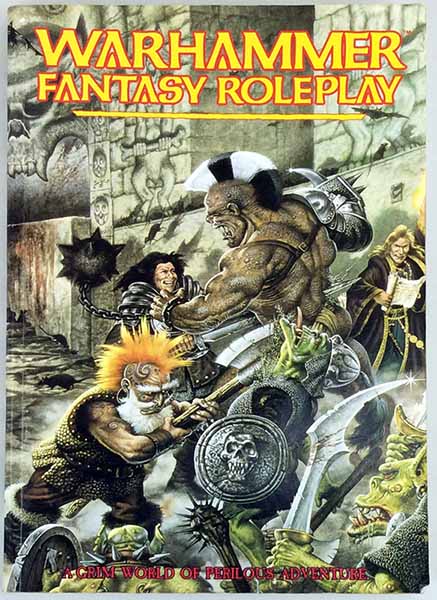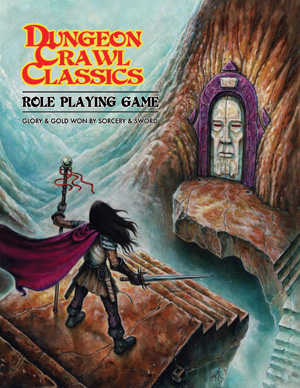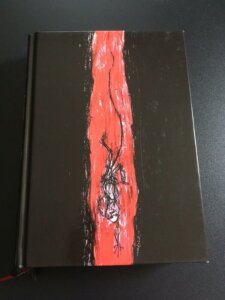We don’t always have the time, energy or players to commit to a long Fantasy campaign. Masks of Nyarathotep, The Enemy Within and other epics are one way to game, but sometimes you want to see a story to its conclusion in a few sessions, not a few months (or years).
Here are some of our favourite adventure modules. None are one-shots (unless your players are machines and/or you have very long game sessions), and some come close to being mini-campaigns, but all should be playable in a few decent sessions. That means you can enjoy what’s on offer without making a long-term commitment.
Apple Lane
Game: Runequest
Publisher: Chaosium
Year: 1978
Writing: Rudy Kraft and Greg Stafford
Apple Lane has been through lots of revisions. It was first published in 1978, with subsequent editions in 1980, 1988, 2016 and 2020 – proving that you can’t keep a good adventure down. It’s unashamedly an introductory fantasy scenario that has introduced (tens of?) thousands of adventurers to the world of Glorantha. Apple Lane contains three adventures –Tribal Initiation, Gringle’s Pawnshop and The Rainbow Mounds, background notes, maps and more. Later editions dropped ‘Tribal Initiation’ and expanded on Gringle Goodsell and his pawnshop. It’s a classic not just because of its place in history; it also shows how to introduce players to a new setting that goes beyond familiar genre tropes. The more you know about Glorantha, the better (and the weirder) it gets – and Apple Lane is a perfect way to get your players acquainted.
contains three adventures –Tribal Initiation, Gringle’s Pawnshop and The Rainbow Mounds, background notes, maps and more. Later editions dropped ‘Tribal Initiation’ and expanded on Gringle Goodsell and his pawnshop. It’s a classic not just because of its place in history; it also shows how to introduce players to a new setting that goes beyond familiar genre tropes. The more you know about Glorantha, the better (and the weirder) it gets – and Apple Lane is a perfect way to get your players acquainted.
Ravenloft
Game: Advanced Dungeons & Dragons
Publisher: TSR
Year: 1983
Writing: Tracy and Laura Hickman
Okay. Oh boy. It’s fair to say that Ravenloft is the most influential fantasy RPG adventure of all time. If it’s not, it’s certainly in the top … aah … two? Three, maybe? Written by husband-and-wife team Tracy and Laura Hickman, it was an attempt to re-invent (re-animate?) the vampire archetype in AD&D and make it more frightening. The result was an instant classic that gave birth to a new campaign setting spanning sequels, re-releases, sourcebooks, boxed sets, novels and more. Its structure is unique, with the DM using cards to determine key item and character locations, and its atmosphere is as gothic as a Halloween party at Tim Burton’s house. The depiction of gypsies (‘Vistani’) hasn’t aged well, but later publications in the setting have gone a long way to remedy this. Even if you don’t play D&D, we recommend picking up Ravenloft – it’s a true classic that, as the cliché goes, every gamer should have in their library.
frightening. The result was an instant classic that gave birth to a new campaign setting spanning sequels, re-releases, sourcebooks, boxed sets, novels and more. Its structure is unique, with the DM using cards to determine key item and character locations, and its atmosphere is as gothic as a Halloween party at Tim Burton’s house. The depiction of gypsies (‘Vistani’) hasn’t aged well, but later publications in the setting have gone a long way to remedy this. Even if you don’t play D&D, we recommend picking up Ravenloft – it’s a true classic that, as the cliché goes, every gamer should have in their library.
Rough Night at the Three Feathers
Game: Warhammer Fantasy Roleplay
Publisher: Games Workshop
Year: 1987
Writing: Graeme Davis
Is this the most famous one-shot fantasy adventure of them all? It could be – but regardless, Rough Night at the Three Feathers (RNatTF) is one of the greats. First published in White Dwarf magazine issue 97, it was republished for WFRP 1e in The Restless Dead (1989), WFRP 2e in Plundered Vaults (2005) and WFRP 4e in Rough Nights and Hard Days (2019). What makes it a classic? For starters, it’s a comedy (a farce, if we want to get technical), not a drama or action story, which made it unique at the time. Instead of kicking in doors, killing monsters and looting piles of gold, the PCs will be running between several plots (some admittedly sinister) involving forbidden love, chaos cults, smugglers and a kleptomaniac gnome. Running it can be a handful, but it’ll be a night to remember if you’re up for the challenge.
and Hard Days (2019). What makes it a classic? For starters, it’s a comedy (a farce, if we want to get technical), not a drama or action story, which made it unique at the time. Instead of kicking in doors, killing monsters and looting piles of gold, the PCs will be running between several plots (some admittedly sinister) involving forbidden love, chaos cults, smugglers and a kleptomaniac gnome. Running it can be a handful, but it’ll be a night to remember if you’re up for the challenge.
Sailors on the Starless Sea
Game: Dungeon Crawl Classics
Publisher: Goodman Games
Year: 2012
Writing: Harley Stroh
If you haven’t played Dungeon Crawl Classics (DCC) yet, you should. And there’s probably no better fantasy starting place than Sailors on the Starless Sea (SotSS). It’s a classic ‘funnel’: an adventure wherein every player takes two or three zero-level characters. Any who survive become level-one characters. Spoiler alert: most of

the characters will die. But that’s the point and part of the fun– and SotSS provides the last in buckets. Structurally, it’s a straightforward ten-location crawl. First, through the wilderness (villagers are being abducted, so it’s off to the abandoned keep), then through underground locations, including a lake and a ziggurat. … then down to the underground lake and ziggurat below). The writing is crisp, the artwork on-point and the setting and tropes familiar so that you can get down to gaming. There are monsters and traps and a nicely dramatic climax. In short, it’s everything you could want from a starting DCC adventure. What more can we say?
Deep Carbon Observatory
Game: D&D, Lamentations of the Flame Princess, OSR
Publisher: False Machine Publishing
Year: 2012
Writing: Patrick Stuart
Sooo … Deep Carbon Observatory (DCO), eh? It’s billed as a module for D&D, Lamentations of the Flame Princess (LotFP) or pretty much any OSR (old-school

renaissance) fantasy system (such as Black Hack, Black Sword Hack, DCC, EZD6, Index Card RPG, Mork Borg, Old School Essentials, Tiny Dungeon, White Hack etc.). It’s intended to be a tough challenge for a mid-level party – and it is. The adventure is set in motion by an exploded dam, which floods the lands around and reveals a dungeon. PCs will journey upriver to the dungeon, with plenty of encounters and rival groups also searching for the prize. The first thing you’ll notice is the writing, which is brilliant. The adventure is a railroad as the PCs travel toward the dungeon, but it’s a railroad with many fascinating stops along the way. The dungeon – sorry, mega-dungeon – is epic, and the entire adventure could easily become the foundation of a campaign. That’s without considering the background and future timeline supplied. DCO is one with the lot; it’s a fascinating and inspiring read, even if you never run it.
AUTHOR BIO
Michael’s from Sydney, Australia. Over the years, he’s organized game conventions, contributed to magazines, and written supplements for White Wolf and Dream Pod 9. He loves reading adventures, strip-mining them for ideas to use in his games and pretending he made everything up himself. He fools no one.
